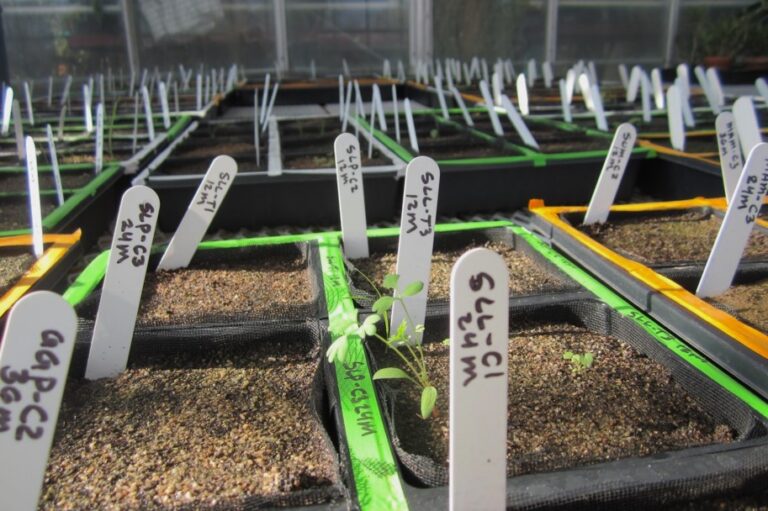By Joseph Knelman
Though rangelands have long supported ranching and wildlife in the West, many people may better recognize these landscapes as the blurred backdrop to audiobook-fueled road trips than as dynamic ecosystems. Recently, however, rangelands have gained visibility for their superblooms. In 2019, rangelands of Southern California drew crowds of 50,000-100,000 visitors on single weekends to witness carpets of poppy wildflowers so dense that the hillsides appeared to be burning in orange flowery flames.
Such superblooms are a manifestation of a soil seed bank, plant-deposited seeds that hang out in soils for several to hundreds of years, waiting for the right conditions to germinate and grow.
For Dr. Akasha Faist, Assistant Professor of Rangeland Sciences at New Mexico State University, the rare floral effulgence of superblooms is not only a moment of natural beauty, but also “a good litmus for what’s in the seed bank.” Dr. Faist and her team are working to uncover what is in rangeland seed banks and how these seeds can be conjured into action to help restore degraded sites. New understandings from her lab and collaborators’ research offer a natural solution for restoring and managing economically and ecologically important rangelands that constitute around 30% of land in the US.
Arid and semi-arid rangelands are the focus of seed bank research by Dr. Faist and Kirsten Romig. Kirsten is a range technician with the USDA Agricultural Research Service at the Jornada Experimental Range, and she is conducting her Ph.D. research in the Faist lab. In pursuit of soil seed banks, Faist, Romig, and collaborators sample multiple vegetation and soil types in New Mexican rangelands. Here, the processes of drought, overgrazing, or shrub invasion can irretrievably disrupt the delicate balance of the desert ecosystems meaning they can no longer productively support livestock, wildlife, or water and carbon dynamics.
Faist and Romig find hope in the top few inches of sandy loam soil that they scoop into paper bags and transport back to the greenhouse for closer examination. In these soils, through greenhouse emergence trials, they will find viable seeds that ancestral plants have left behind for uncertain times. Like the human-made seed bank vaults that store seeds to protect agricultural resources in the case of catastrophe, soil seed banks are nature’s insurance against harsh conditions and unfavorable years.
If vegetation is lost because of extreme drought, fire, or the like, the seed bank can restore plant communities when conditions are once again favorable, thus ensuring a functioning, vibrant ecosystem over time; life in the wake of petrichor and ash. Fortunately for rangeland ecologists looking to unlock seed banks as a tool for land management in drylands, plants that typify the aboveground aesthetic of these rangelands invest mightily in seeds and the dry desert soils are especially conducive to long-term seed storage.
Faist and Romig’s research addresses two primary questions: What seeds are out there in rangeland soil seed banks?; and, how might they be coaxed into action to restore a healthy, productive rangeland?
In a first step to use seed banks to restore healthy rangelands, Faist and Romig are taking an inventory of seed banks, mapping out what seeds different soils contain. The lab has found previously undocumented biodiversity lurking just inches below our feet. In a recent study led by Romig at the JER, the team sampled soils across the ~190,000 acre site. Romig watered 258 soil samples in the greenhouse to reveal what seeds were cached within. “When I first started watering soils in the greenhouse [seed germination] was almost immediate, like a carpet of seedlings. I had to scramble to get extra people to help me count these seedlings,” Romig described. “[The experiment] lasted for 2 years and in the second year we were still getting new plant species coming up, also species that had not been found on the range.”
